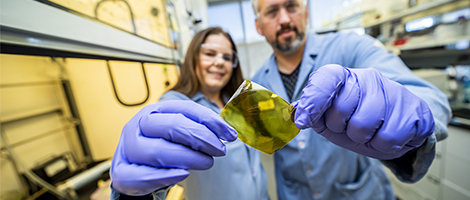
Source and Photo : Marilyn Sargent/Berkeley Lab
Researchers at U.S. Department of Energy's Lawrence Berkeley National Laboratory (Berkeley Lab) may have an answer: The team has developed a new battery membrane that could both lower costs and significantly lengthen the lifespan of flow batteries, the giant batteries made for an electrical grid that use liquid electrolyte to store electricity.
Key ingredients
Their cutting-edge technology uses a class of polymers (large molecules) called AquaPIMS, short for “aqueous-compatible polymers of intrinsic microporosity.” With AquaPIM membranes, batteries can be created using easily accessible and affordable materials like water, zinc and iron.
Lifespan matters
The researchers also designed a model that can predict a battery’s efficiency and lifespan. Usually, scientists work to determine the lifespan of a battery after a cell is built, which causes a long delay. This innovative model links the battery’s performance to the performance of various membranes, quickly indicating how long the battery will last. The researchers also proved that their model can be used on other types of batteries as well.
An affordable alternative
The AquaPIM technology was originally discovered when the authors of the study were experimenting with creating a membrane that worked in aqueous alkaline systems, as many grid batteries have alkaline electrodes. The AquaPIM membrane battery is an alternative to fluorinated polymer membranes, which only work with acidic chemistries, and can be very expensive.
Why it matters
The hunt for an affordable flow battery design is crucial to solve the storage problem underlying the transition to renewables. How can we keep all the clean energy we’ve harnessed if the sun isn’t shining and the wind isn’t blowing?
What’s next
The Berkeley Lab team is now looking to try out the AquaPIM technology with new materials, and test how their membrane works with different types of batteries. The lower the battery cost, the faster the energy transition can spread!